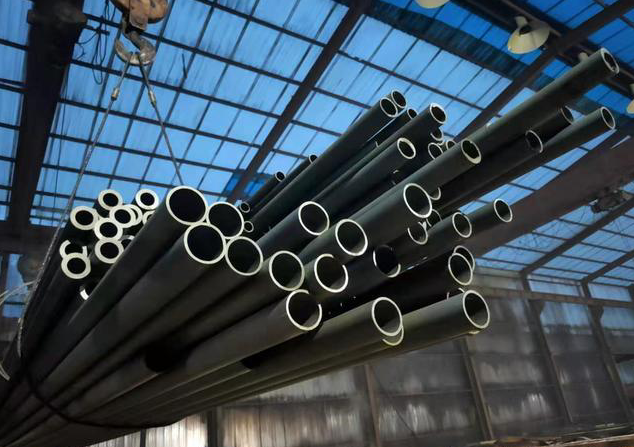
The Principle of Seamless Pipe Passivation
The mechanism of seamless steel pipe (smls) passivation can be explained by film theory, that is, it is believed that passivation is due to the action of metal and oxidation properties. When it acts, a very thin, dense, good covering performance is formed on the metal surface, and it is firmly adsorbed on the metal. Passivation film on the surface. This layer of film exists in phase, usually a compound of oxidized metal. It plays the role of completely separating the metal from the corrosive medium, preventing the metal from contacting the corrosive medium, so that the metal basically stops dissolving and forming a passive state to achieve the role of anti-corrosion.

Passivation advantages of passivation seamless steel pipe:
A) Compared with the traditional physical sealing method, the passivation process has the characteristics of absolutely no increase in the thickness of the workpiece and no change in color, which improves the precision and added value of the product, and makes the operation more convenient;
B) Since the passivation process is carried out in an unreacted state, the passivation agent can be added and used repeatedly, so the life span is longer and the cost is more economical.
C) Passivation promotes the formation of an oxygen molecular structure passivation film on the metal surface, the film layer is dense, the performance is stable, and it has a self-repairing effect in the air at the same time, so compared with the traditional anti-rust oil method, the passivation formed The passivation film is more stable and corrosion resistant.
The mechanism of pickling passivation: We know that iron and aluminum can quickly dissolve in dilute HNO3 or dilute H2SO4, but the dissolution phenomenon in concentrated HNO3 or concentrated H2SO4 almost completely stops. Carbon steel is usually easy to rust. Add appropriate amount of Ni and Cr to the steel to become stainless steel.
The phenomenon that metals or alloys are affected by some factors and their chemical stability is significantly enhanced is called passivation. The metal passivation phenomenon caused by some passivating agents (chemical) is called chemical passivation. Oxidants such as concentrated HNO3, concentrated H2SO4, HClO3, K2Cr2O7, KMnO4 can passivate metals. After the metal is passivated, its electrode potential moves in the positive direction, making it lose its original characteristics. For example, the passivated subway cannot replace copper in the copper salt. In addition, electrochemical methods can also be used to passivate the metal, such as placing Fe in a H2SO4 solution as an anode, using an external current to polarize the anode, and using a certain instrument to increase the iron potential to a certain extent, and Fe will be passivated. The metal passivation phenomenon caused by anode polarization is called anode passivation or electrochemical passivation.


